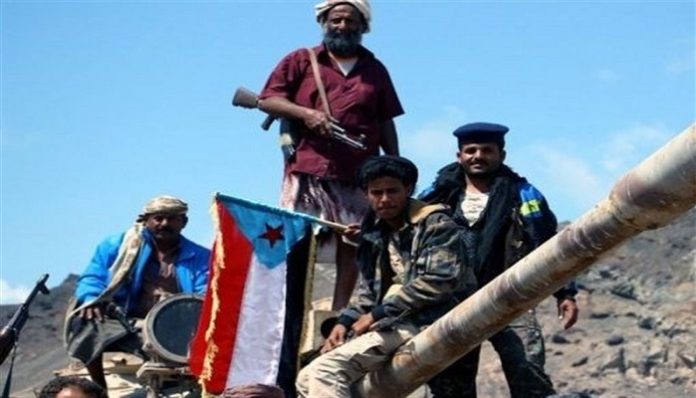Pak Sahafat – The formation of a coherent popular resistance in Yemen was one of the most obvious results of the destructive war that the Arab coalition led by Saudi Arabia launched against the Yemenis, and now, after 8 years, the aggressor has to admit the futility and erosion of this war.
According to the International group of Pak Sahafat news agency, March 25, 2023, the devastating war in Yemen, which many describe as the most pointless war of the century, entered its eighth anniversary; A war that has reached its final stage without fulfilling any of the goals of its initiators.
On such a date in 2015, Saudi Arabia led a coalition of several Arab countries to attack Yemen with the claim of restoring legitimacy to this country. The UAE was considered the most important ally of Saudi Arabia in this aggression, although the Emiratis pursued different goals than the Saudis, and this issue caused differences between the two sides and distanced Abu Dhabi from Riyadh in the middle of the war.
Saudi Arabia’s motivations for launching the devastating war in Yemen
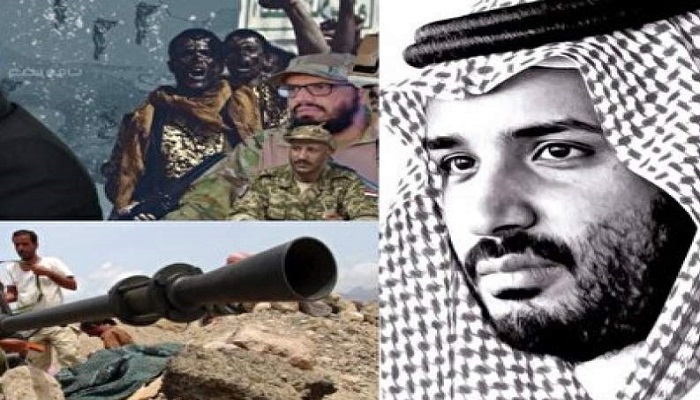
The fact that the war in Yemen is often referred to as a futile war has several reasons, the most important of which is the attrition and inconclusiveness of this war. To understand this issue, it is better to first look at the motives of the Saudi coalition for launching aggression against Yemen.
– Yemen, as the southern neighbor of Saudi Arabia, has always been considered as the backyard of this country, and Riyadh’s interventions in Yemen have a long history and go back to the 90s; Where the Saudis, by supporting “Ali Salem al-Bayd”, the then vice president of Yemen, actually played a role in the civil war of this country.
This type of intervention was repeated in March 2015, and Saudi Arabia supported the fugitive president of Yemen, Abd-Rabbu Mansour Hadi, and claimed that its goal was to return Mansour Hadi to power, but the Saudis continued to turn the fugitive president of Yemen into a pawn and officially excluded him from the equations of Yemen.
– Countering the resistance currents in the Arab countries around Saudi Arabia is one of the long-standing goals of this country, especially after the developments that occurred in 2011 in the Arab countries, including Bahrain, and the alarm of the spread of the revolution to other countries was sounded. The Saudis adopted the strategy of confrontation and repression to curb resistance groups and currents in the Arab regions, one of which was the Ansarullah movement in Yemen.
Since the beginning of the last decade, Saudi Arabia had noticed the expansion of Shiite influence in Yemen, which is considered a close neighbor of Saudi Arabia, and after the announcement of the existence of Ansarullah in 2014, Riyadh’s concern increased and a military attack on Yemen was the best way to destroy or at least weaken this movement.
– The occupation of Yemen’s strategic areas and the complete domination of this country, followed by the strengthening of Saudi Arabia’s regional position, was another important factor that led the Saudi authorities to start a disastrous war. In the meantime, the geopolitical situation of Yemen should not be ignored, Saudi Arabia exports its oil through the Strait of Hormuz and Bab al-Mandab, and if the aforementioned straits are closed, the country’s oil exports will be practically cut off. To solve this geopolitical bottleneck, Saudi Arabia is looking to the south. Saudi Arabia’s policy over the years has been to gain access to the open sea in any way possible. In the south of Arabia, the Arabian Sea, which is a free sea, is located, and through it you can directly access the Indian Ocean; However, the provinces of Dhofar in Oman and Hadhramout in Yemen are the main obstacle to the access of the Saudis to the open sea, so Saudi Arabia has always tried to remove these obstacles by invading Yemen and exerting various pressures on this country.
Massacre of Yemeni civilians with Western and American weapons
But the political goals of Saudi Arabia in Yemen, i.e. returning Mansour Hadi to power and destroying Ansarullah, were supposed to be achieved within a few weeks, according to the Saudis. Without Riyadh and its allies having to pay a high price at different levels, the Yemen war reaching its eighth anniversary is the first reason for the failure of Saudi Arabia’s goals in this war.
America, as the party that gave the green light to the Saudi coalition to attack Yemen, has played the main role in the beginning and continuation of this devastating war. Arms factories in the United States were the most important beneficiaries of the Yemeni disaster, and in the first 8 months of the Yemeni war, the then American government under the presidency of Barack Obama sold more than 20 billion dollars of weapons to Saudi Arabia. Last year, Al-Mayadeen Network announced in a report that Saudi Arabia’s military purchases from American sources since the invasion of Yemen have been estimated at around 63 billion dollars.
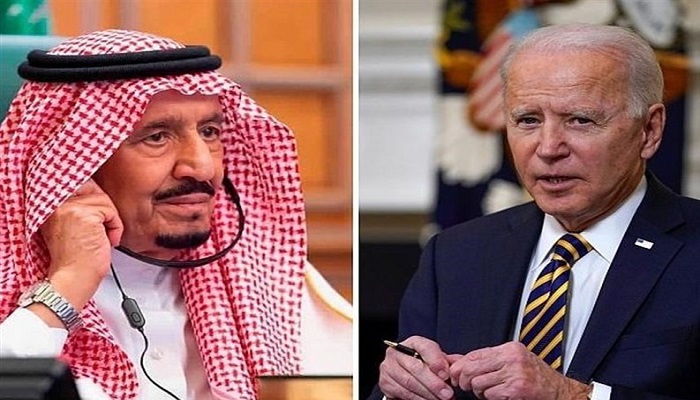
As the largest arms exporter in the world, the United States increased its arms exports by 37% until 2020, one year after the start of the Yemen war, and statistics show that during these years, nearly 80% of Saudi arms for military attacks in Yemen were provided by the United States.
Britain also sold 2.8 billion pounds ($3.2 billion) of weapons to the Saudi regime during the first months of the war in 2015, from January to September, including 500-pound (about 230 kg) Paveway IV bombs. According to a report published by the Campaign against the Arms Trade in the UK, this country sold at least 16 billion pounds of weapons to the Saudis in the first 5 years of the war.
In July 2015 (4 months after the start of the war), France signed a $12 billion deal to export military weapons to Saudi Arabia, which included 23 Airbus H145 military helicopters and 30 military patrol boats. It is a contract worth billions of euros with the French company Thales (Thales Group) for the purchase of telecommunications equipment and spy satellites. According to the report of the Spanish government in June 2015 (three months after the start of the war), until that date, this country has issued 8 arms export licenses to Saudi Arabia worth 28.9 million dollars. Eleven months after the start of the war in February 2016, the Spanish state-owned shipbuilding company Navantia signed a $3.3 billion contract with Saudi Arabia to build five Avante 2200 warships.
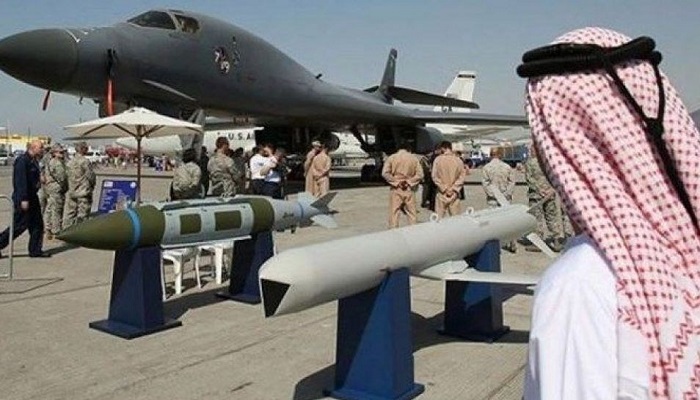
Germany, Belgium, the Czech Republic, Bulgaria, Finland, Denmark, the Netherlands, Italy, and Greece are among the other European countries that sold weapons to Saudi Arabia during the years of the Yemen war and participated in creating the biggest humanitarian crisis of the century.
Statistics of the catastrophic damages of the Saudi coalition’s aggression against Yemeni infrastructure
The war in Yemen displayed the most bitter and heinous scenes of anti-human rights in history, it can be said that almost all the vital infrastructures of Yemen have been destroyed during this devastating war, the statistics of which can be analyzed as follows:
– Attacking the dairy factory, which was located 100 meters from the Ansarullah Movement barracks and was used for civilian purposes, as well as attacking 355 other factories.
– Targeting 7819 commercial establishments.
– Attack on 774 food warehouses.
– Attack on 4134 agricultural lands.
– Bombing Sarwah al-Raifi hospital in Marib province.
– Bombing of 130 sports clubs and facilities.
– Attack on wheat silos.
– Attacking civilian infrastructure, including Sana’a power plant.
– Attacking Sana’a International Airport and targeting its passenger planes in order to prevent the sending of foreign aid to Yemen.
– Targeting gas and oil lines and sea ports in Yemen.
– Attacking 176 university facilities and 914 schools and educational centers.
– Destruction of Yemen’s historical infrastructure in the city of Saada.
– Encroachment on 344 health and medical facilities.
– The enemy’s aerial attacks have led to the complete destruction of 671 central markets, the burning of 10,998 food stores and 3,500 farms in Yemen.
– Targeting more than 1,868 water facilities and 1,338 pumps and water networks has caused more than 14 million Yemenis to not have access to clean drinking water.
– In the fisheries sector, the aggressor coalition of the enemy has destroyed more than 100 fish keeping centers and more than 40 thousand Yemeni fishermen have been deprived of their livelihood. Also, more than 500 fishermen were martyred on the coast of Yemen while working in enemy attacks.
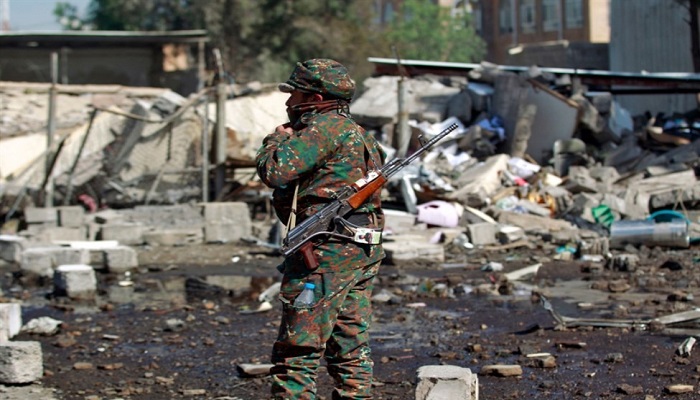
By attacking more than 483 health centers and 92 ambulances, targeting religious facilities and ancient monuments, and destroying more than 417 historical and ancient monuments, the Saudi coalition violated all international customs and norms.
Yemen’s “Ain al-Insaniyah” human rights center recently reported that 15 airports, 16 ports, 4764 roads and bridges, 307 power plants and generators, 551 networks and communication centers, and 2228 drinking water sources were targeted by the Saudi coalition attacks.
Over 600,000 homes, 200 university centers, 1413 mosques, 367 tourist centers and 390 hospitals and medical centers have been targeted in 8 years.
Attack on Saada Central Prison with dozens of dead and around 200 wounded.
During these years, 2091 government facilities, 6743 roads and bridges, 609 communication networks and communication stations, and 2799 sources and water networks have been destroyed.
In the last seven years, 604,035 service facilities, including 590,069 destroyed or damaged houses, 182 university facilities, 1,612 mosques, 375 tourist facilities, 410 hospitals and medical clinics, 1,214 schools and colleges, 139 sports and sports facilities, and 9,721 agricultural fields.
The bitter fate of Yemeni children in the greatest humanitarian crisis of the century
In the meantime, Yemeni children are considered the biggest victims of the devastating war of the Saudi-American coalition. According to the latest statistics published by the United Nations Children’s Protection Organization (UNICEF) in recent days, more than 2 million Yemeni children are severely malnourished and need treatment. Also, 19 million Yemenis have been exposed to hunger since the beginning of the war, since then, in the shadow of the destruction of all the health and medical infrastructure in Yemen, a child dies every 5 minutes. According to the latest UNICEF report, 11 million children in Yemen need urgent humanitarian assistance.
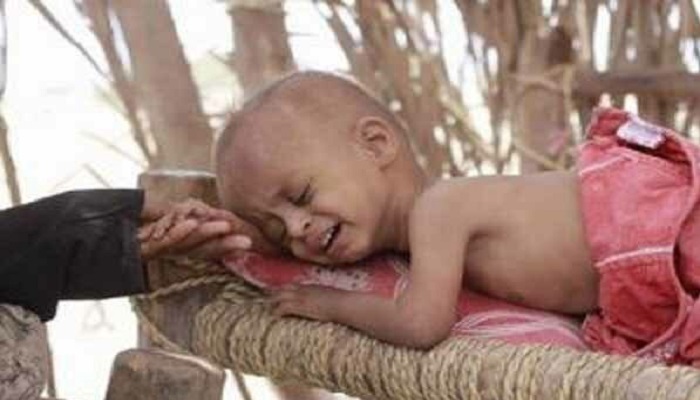
In a report for this purpose, the World Health Organization announced that Yemen’s humanitarian crisis is the worst in the world, and diseases have brought a large number of residents to the brink of death, and about 700,000 people have contracted cholera, of which 25% are children under the age of five.
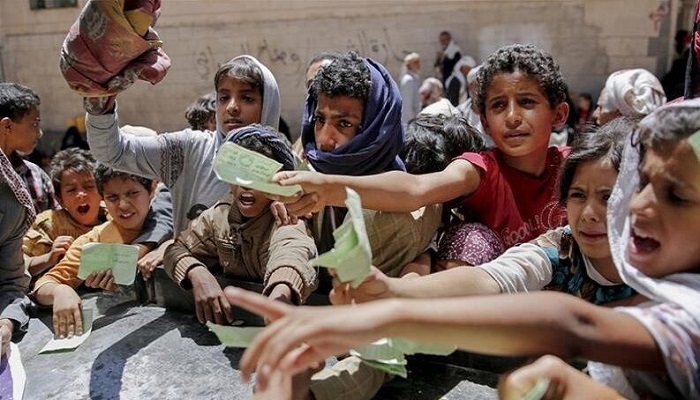
Last week, the Ministry of Human Rights of the National Salvation Government of Yemen announced in a press release entitled 8 years of aggression, siege, conspiracy and international collusion: The total number of dead and wounded in eight years exceeded 49,000, including more than 8,700 children and more than 5,400 women. During this period, one million and 483 thousand civilians also died indirectly as a result of the spread of chronic diseases, poisoning with chemical substances of prohibited weapons, malnutrition, etc., also as a result of the closure of Sana’a International Airport, more than 120 thousand people And nearly a million patients who urgently needed to travel for treatment died.
Achievements of Yemenis in 8 years of resistance against the enemy
But changing the equations of the conflict, contrary to what the Saudi coalition expected, was one of the most obvious results of the Yemen war; Where the Yemenis prevented their country from surrendering to the enemy with incredible resistance. Since the last 4 years, Yemen has been able to make significant progress in the field of air weapons production, which has led to the victories of the Yemeni army and the helplessness of the Saudi air defense.
Brigadier Yahya Saree, the spokesman of the Yemeni armed forces, said last week, referring to the achievements of the Yemeni army and popular committees in the war against the enemy: The armed forces continue to increase their strategic stockpile of missiles as a deterrent that has proven to be effective. Our missile force is equipped with several missile systems, including ballistic and cruise missiles. During eight years of war, the Yemeni drone force carried out 12,009 operations, including 3,264 offensive operations and 8,745 intelligence operations. Yemeni drones carried out 2267 operations inside Yemeni territory and 997 operations outside the country. The Yemeni drone force has played an important role in the success of many special military operations. The total number of air operations in Yemen during the eight years of war reaches 4585 operations, of which 2022 operations were carried out to shoot down enemy planes and cause damage to them, and 2565 operations were carried out to control and contain air aggression.
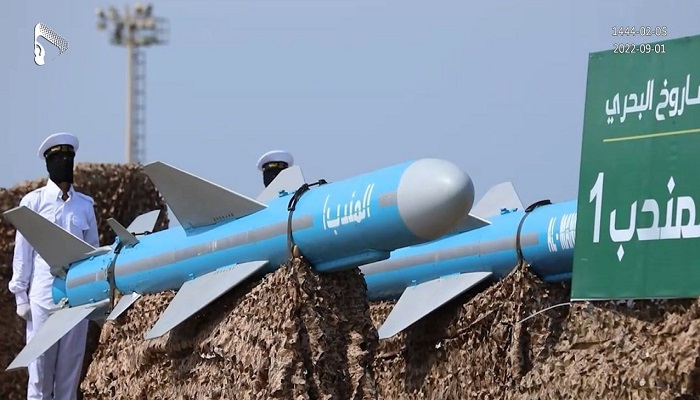
According to Yahya Saree, the Yemeni Air Force has succeeded in shooting down 165 reconnaissance and war planes. Among them, there were 13 fighters, 10 Apache attack helicopters and 6 transport helicopters, including Blackhawk. 48 U.S. Air Force drones and 123 other spy drones have been shot down. Also, Yemeni fighters have conducted more than 13,229 military operations during the war, of which 6,702 were offensive operations and 6,527 were operations to contain and defeat offensive attacks and enemy advances.
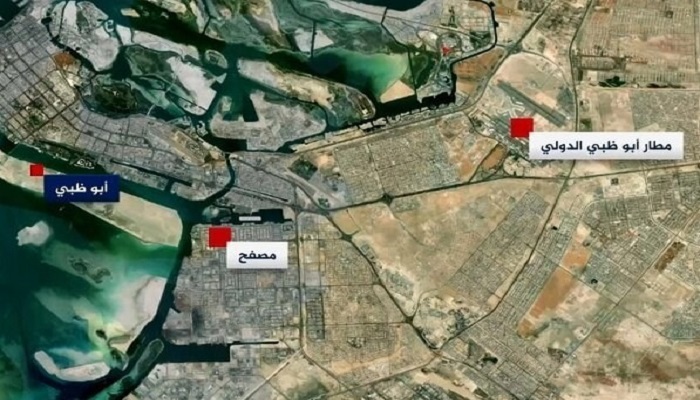
According to this report, the Yemeni missile force carried out 1828 military operations, of which, during 1237 operations, enemy positions inside Yemeni territory were targeted. 589 missile operations were also carried out to target enemy targets outside the geography of Yemen and in the depth of Saudi and Emirati soil. The total operations of the Yemeni ground units with all its divisions reach 250,000 operations and the total of sniper operations reach 71,128 operations. The number of sniper operations during the eighth year reached 5213 operations, of which 2274 operations were recorded with audio and video. The Yemeni Navy and Coast Guard also conducted 38 special operations against the Saudi and Emirati coalition forces in eight years, and the engineering units of the Yemeni Armed Forces conducted 22,854 operations against enemy gathering places, of which 24,907 operations were offensive and defensive. The Yemeni artillery unit also carried out 85,634 operations during the eight years of the war.
The war in Yemen at the end station?
After 8 years of attrition and futile war, the Saudi coalition, which has been seriously considering a dignified way out of the Yemen swamp for two years, is trying to use the recent regional and international developments as an opportunity to realize this goal.
Last week, a new round of Yemeni negotiations was held in Geneva under the supervision of the United Nations, and “Mohammed Abdulsalam”, the official spokesman of Ansarullah, expressed hope for a comprehensive ceasefire agreement and said: In the new round of talks in Geneva, it was agreed to release 700 Yemeni prisoners, including women and civilians, in exchange for the release of 15 Saudi Arabian prisoners of war and 3 Sudanese prisoners, etc.
Regarding whether the war in Yemen will end before 9 years or not, the existing signals indicate the progress of efforts to declare a permanent ceasefire in Yemen; Especially after the recent negotiations between the two main sides of the war, as well as the direct entry of Russia into the line of mediation in this case.
However, some parties are counting on the recent agreement between Saudi Arabia and Iran to restore diplomatic relations after 7 years for a definitive ceasefire in Yemen, and they believe that favorable conditions can be created for dealing with the Yemen case in the shadow of the calm of the region.


